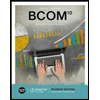
Case summary: A person JT is the owner of a commercial bakery which produces a variety of goods. The person JT was required to conduct a test on the food products for contamination at his plant. He did not present the results to the U.S Drug and Food Administration Officials as he was not required to do so. He asked his employees to repeatedly conduct the test until it comes out negative. The products with salmonella contamination were sent for sale to retailers. Five persons who consumed the bakery products were taken ill and one even died of infection.
To explain : The selling of products which tested positive for salmonella contamination was ethical.
Trending nowThis is a popular solution!

Chapter 5 Solutions
The Legal Environment of Business: Text and Cases
- I'm a senior majoring in Business Management at University. Accomplishment: Received Perfect Attendance Award at High School - Situation: - Task: - Action: - Result:arrow_forwardI'm a senior majoring in Business Management at University. Accomplishment: Performed all 4 years in my High School’s Talent Show - Situation: - Task: - Action: - Result:arrow_forwardI'm a senior majoring in Business Management at University. Mistake: Took 5 AP Classes at High School - Situation: - Task: - Action: - Result:arrow_forward
- I'm a senior majoring in Business Management at University. Accomplishment: Received High Honor Roll Award at High School - Situation: - Task: - Action: - Result:arrow_forwardGiven below are the account balances for Redstone Corp: . Gross sales: $150,000 • Sales returns and allowances: $6,000 • Selling expenses: $15,000 • Cost of goods sold: $65,000 • Interest expense: $4,000 How much is the gross profit margin?arrow_forwardI'm a senior majoring in Business Management at University. Accomplishment: Graduated High School - Situation: - Task: - Action: - Result:arrow_forward
- Techtronic Inc., a manufacturing company, has just completed an order that Micro Solutions placed for 150 gadgets. The direct material, purchased parts, and direct labor costs for the Micro order are as follows: • Cost of direct materials: $54,000 • Cost of purchased parts: $30,000 • Direct labor hours: 300 hours • • Average direct labor pay rate: $18 per hour Overhead costs were applied at a plant wide overhead rate of 250 percent of direct labor dollars. Compute the total cost of the Micro order.arrow_forwardAccomplishment: Bilingual - Situation: - Task: - Action: - Result:arrow_forwardfinance qnarrow_forward
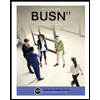 BUSN 11 Introduction to Business Student EditionBusinessISBN:9781337407137Author:KellyPublisher:Cengage Learning
BUSN 11 Introduction to Business Student EditionBusinessISBN:9781337407137Author:KellyPublisher:Cengage Learning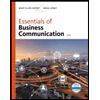 Essentials of Business Communication (MindTap Cou...BusinessISBN:9781337386494Author:Mary Ellen Guffey, Dana LoewyPublisher:Cengage Learning
Essentials of Business Communication (MindTap Cou...BusinessISBN:9781337386494Author:Mary Ellen Guffey, Dana LoewyPublisher:Cengage Learning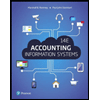 Accounting Information Systems (14th Edition)BusinessISBN:9780134474021Author:Marshall B. Romney, Paul J. SteinbartPublisher:PEARSON
Accounting Information Systems (14th Edition)BusinessISBN:9780134474021Author:Marshall B. Romney, Paul J. SteinbartPublisher:PEARSON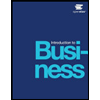
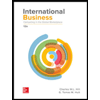 International Business: Competing in the Global M...BusinessISBN:9781259929441Author:Charles W. L. Hill Dr, G. Tomas M. HultPublisher:McGraw-Hill Education
International Business: Competing in the Global M...BusinessISBN:9781259929441Author:Charles W. L. Hill Dr, G. Tomas M. HultPublisher:McGraw-Hill Education